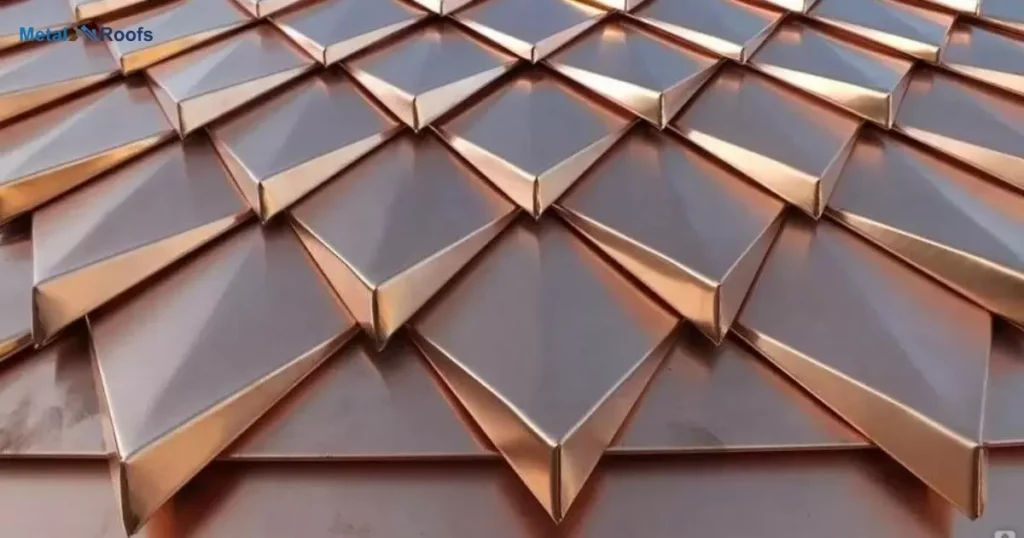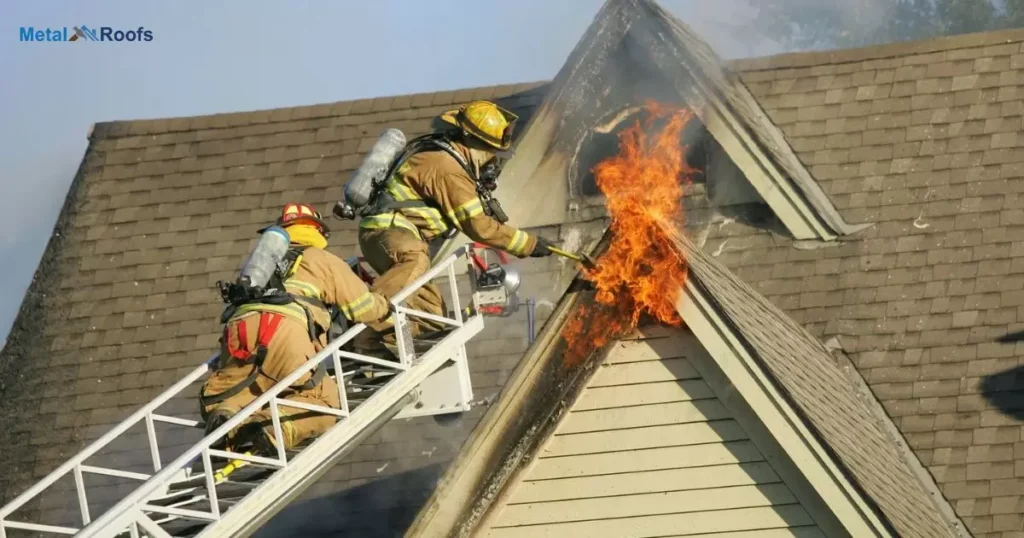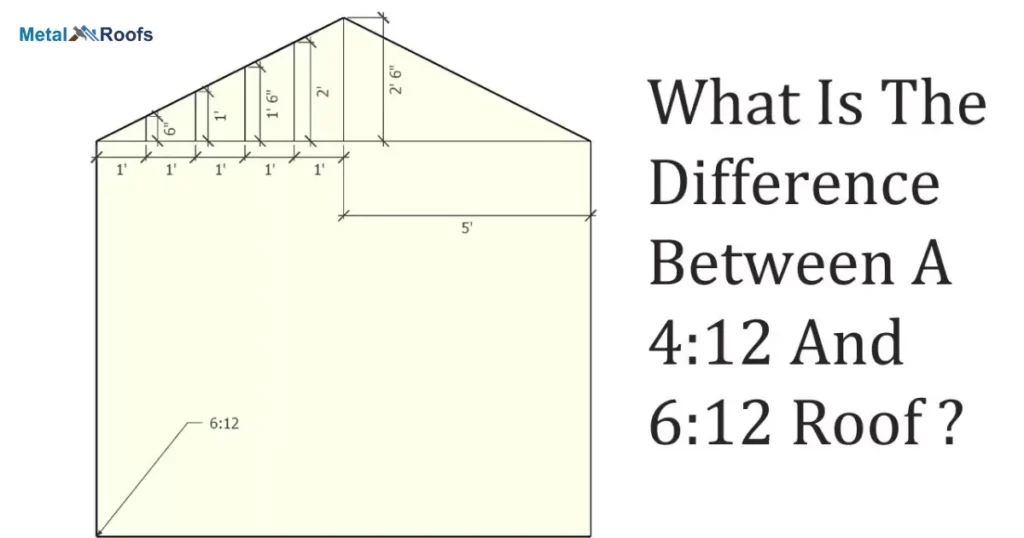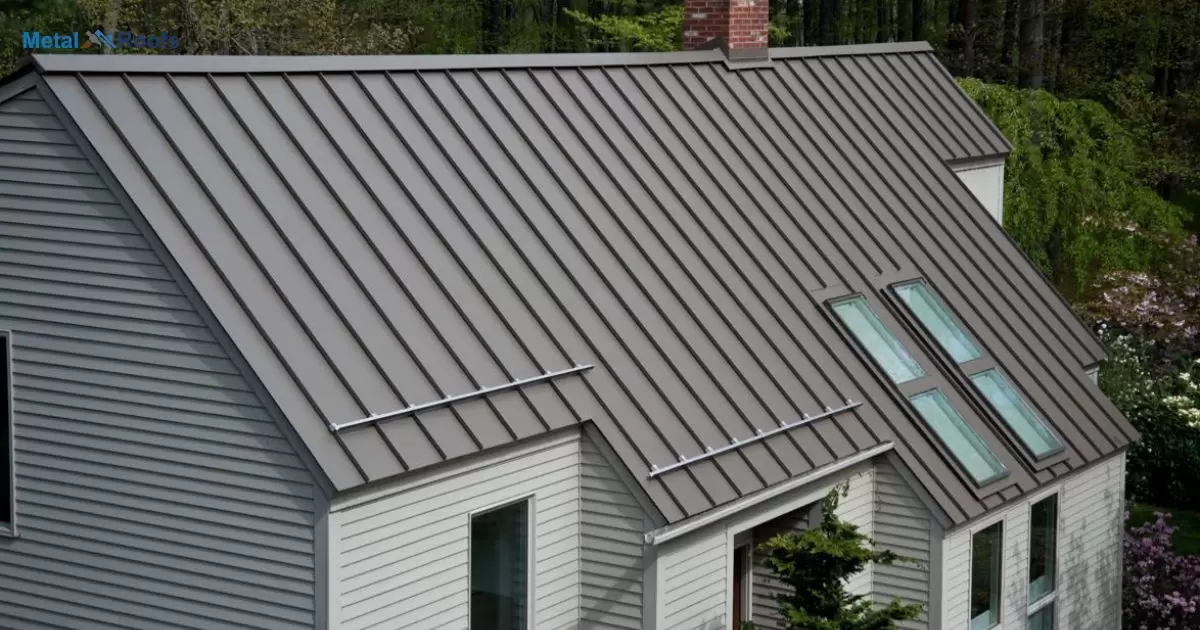slope for a metal roof refers to its angle or pitch. It’s crucial for proper water drainage. A steeper slope sheds water more efficiently. Different metal roofing materials have specific slope requirements. Adequate slope prevents leaks and extends roof lifespan.
This essential guideline is key to ensuring your roof’s longevity. By knowing the optimal angle, you can prevent water pooling and leaks. Learn how to maintain proper drainage for your metal roof. Let’s delve into the specifics of what is the minimum slope for a metal roof?
The minimum slope for a metal roof is vital for water drainage. It prevents leaks and enhances durability. Maintaining this angle safeguards against heavy rain damage, ensuring your roof make popping sounds. Let’s delve into achieving optimal slope for your metal roof.
Key Takeaways
- Minimum slope for a metal roof varies by material.
- General guideline around 1/4:12.
- Check manufacturer’s recommendations.
- Consider local codes and climate.
- Adequate slope prevents leaks and aids drainage.
Minimum Slope On Metal Roof
The minimum slope for a metal roof depends on the material. As a rule, it’s about 1/4 inch of vertical rise for every 12 inches of horizontal run. But this can vary. Always check the manufacturer’s guidelines. They’ll tell you the ideal slope for your roofing material.
It’s also wise to consider local building codes and your climate. These factors can affect the slope needed to prevent water pooling and leaks. With the right slope, your metal roof will stay watertight and secure for years to come.
Minimum Pitch For A Metal Roof
| Metal Roof Type | Minimum Pitch |
| Standing Seam | 1/4:12 |
| Corrugated Metal | 1/4:12 |
| Ribbed Metal | 1/4:12 |
| Metal Shingles | 3/12 |
| Interlocking Panels | 1/4:12 |
The minimum pitch for a metal roof depends on the material. Generally, it’s about 1/4:12, meaning a slight incline to prevent water pooling. Always follow the manufacturer’s guidelines for your chosen metal roofing.
Local building codes and climate factors also play a role in determining the pitch. A proper slope ensures water drains efficiently, reducing the risk of leaks. So, it’s essential to get it right to maintain a durable and watertight metal roof.
Design And Versatility

Design and versatility go hand in hand when it comes to metal roofing. The design options are vast, ranging from traditional to modern styles. Metal roofs can mimic the appearance of other materials like wood or tile, offering aesthetic flexibility. This versatility extends to different architectural styles and preferences.
Metal roofs are lightweight, making them suitable for a variety of structures, including residential homes and commercial buildings. Their durability ensures long-term performance, withstanding harsh weather conditions and requiring minimal maintenance.
Energy Efficiency
Energy efficiency is crucial for saving energy and reducing costs. It involves using less energy to perform tasks, like heating or cooling homes, while maintaining comfort. Simple changes, like sealing drafts and using energy-efficient appliances, can make a big difference.
Upgrading insulation and windows can also improve efficiency significantly. Renewable energy sources, such as solar panels, offer sustainable alternatives, reducing reliance on traditional energy sources. Government incentives often encourage energy-efficient practices, benefiting both homeowners and the environment.
Safety Considerations
When installing a metal roof, safety is paramount. Ensure a secure working environment by using proper safety gear such as helmets, harnesses, and sturdy footwear. Take precautions to prevent falls by installing guardrails or using safety nets. Be cautious when handling metal roofing materials to avoid cuts and injuries.
Secure all materials properly to prevent them from falling and causing harm. Finally, check weather conditions before starting work to avoid accidents due to adverse weather. By prioritizing safety, you can ensure a smooth and incident-free metal roofing installation process.
Roof Assembly Fire Classifications

Roof assembly fire classifications are crucial for ensuring building safety. They categorize roofs based on their fire resistance, which helps in implementing proper safety measures. Class A roofs offer the highest level of fire resistance, being most effective at preventing the spread of flames.
These roofs are typically made of materials like concrete or clay tiles. Class B roofs provide moderate fire resistance, slowing down flame spread compared to Class A. They often consist of materials like treated wood shakes or shingles. Class C roofs offer the lowest level of fire resistance, providing minimal protection against flame spread.
Roofing Code Requirements
Roofing code requirements are crucial guidelines for ensuring safe and durable roofs. These codes specify factors like minimum slope, material standards, and installation methods. Each region may have its own set of codes, influenced by factors such as climate and local building practices.
Adhering to these codes is essential for passing inspections and avoiding costly repairs down the line. Contractors must stay updated on the latest code revisions to maintain compliance and ensure customer satisfaction.
Roofing System-Specific Guidelines
When it comes to roofing systems, specific guidelines are crucial. Each type of roofing material has its own set of recommendations. For metal roofs, the minimum slope is typically around 1/4:12, ensuring proper drainage and leak prevention. Check the manufacturer’s instructions for precise details.
Local building codes and climate factors also play a role in determining the appropriate slope. Following these guidelines ensures a durable and effective roofing solution. For other roofing materials like asphalt shingles or tiles, different guidelines apply. These materials may have different slope requirements for optimal performance.
2/12 Roof Pitch

A 2/12 roof pitch means the roof rises 2 inches for every 12 inches of horizontal run. This creates a gentle slope. It’s commonly used for low-slope roofs where space or architectural style requires it. This pitch allows for easy shedding of water, preventing pooling and leaks.
It may require special materials or sealing to ensure waterproofing. Despite its low angle, proper installation is crucial to avoid water infiltration and structural issues. It’s important to follow manufacturer’s guidelines and local building codes for this type of roof pitch.
Minimum Slope For Standing Seam Metal Roof
The minimum slope for a standing seam metal roof varies by the type of metal used. As a general rule, aim for a slope of at least 1/4 inch per foot. This slope helps water flow off the roof, preventing leaks and damage. It’s essential to follow manufacturer guidelines for your specific metal roofing material.
Local building codes may dictate a minimum slope requirement. Proper slope ensures effective water drainage and protects your roof against weather elements. Always consult experts to ensure your standing seam metal roof meets safety and performance standards.
Benefits Of Steep Slope Metal Roofs
Steep slope metal roofs offer several benefits:
Durability: Metal roofs are highly durable and can withstand harsh weather conditions, including heavy rain, snow, high winds, and hail. They are also resistant to fire, mildew, and rot.
Longevity: Metal roofs have a longer lifespan compared to traditional roofing materials like asphalt shingles. With proper maintenance, they can last 50 years or more.
Low Maintenance: Metal roofs require minimal maintenance. They do not crack, warp, or rot like other roofing materials, and they are resistant to pests.
Energy Efficiency: Metal roofs can reflect solar radiant heat, which can help reduce cooling costs during hot weather. Many metal roofing materials are made from recycled materials and are recyclable at the end of their lifespan, making them environmentally friendly.
Aesthetic Appeal: Metal roofs come in a variety of styles, colors, and finishes, allowing homeowners to choose a look that complements their home’s architecture and enhances curb appeal.
Lightweight: Despite their durability, metal roofs are lightweight compared to other roofing materials. This reduces the structural load on the building and can potentially lower construction costs.
Fire Resistance: Metal roofs are non-combustible, which can provide added protection against wildfires and reduce the risk of fire spreading to neighboring structures.
Weather Resistance: Metal roofs are designed to shed rain and snow quickly, reducing the risk of water damage to the underlying structure.
Increased Property Value: Installing a metal roof can increase the resale value of a home due to its durability, longevity, and energy efficiency.
Insurance Benefits: Some insurance companies offer discounts on homeowners’ insurance premiums for homes with metal roofs due to their resistance to weather damage and fire.
Frequently Asked Questions
What Is The Minimum Roof Pitch For Metal Sheeting?
Minimum roof pitch for metal sheeting varies by material, typically around 1/4:12, check manufacturer’s guidelines for specifics.
What Is The Minimum Slope For A Roof?
The minimum slope for a roof varies by material, often around 1/4 inch vertical rise for every 12 inches horizontal run, crucial for drainage and leak prevention.
What Is The Lowest Slope For A Metal Roof?
The lowest slope for a metal roof is typically around 1/4 inch of rise for every 12 inches of run.
Conclusion
Determining the minimum slope for a metal roof is crucial. It ensures proper drainage and prevents water leaks inside structures. To consult manufacturers’ guidelines and adhere to local building codes for best results.
By maintaining the appropriate slope, you can enhance the longevity and performance of your metal roof. In summary, the rule of thumb is about 1/4 inch of rise for every 12 inches of run. This guideline provides adequate water shedding capability, especially in regions prone to heavy rainfall.











